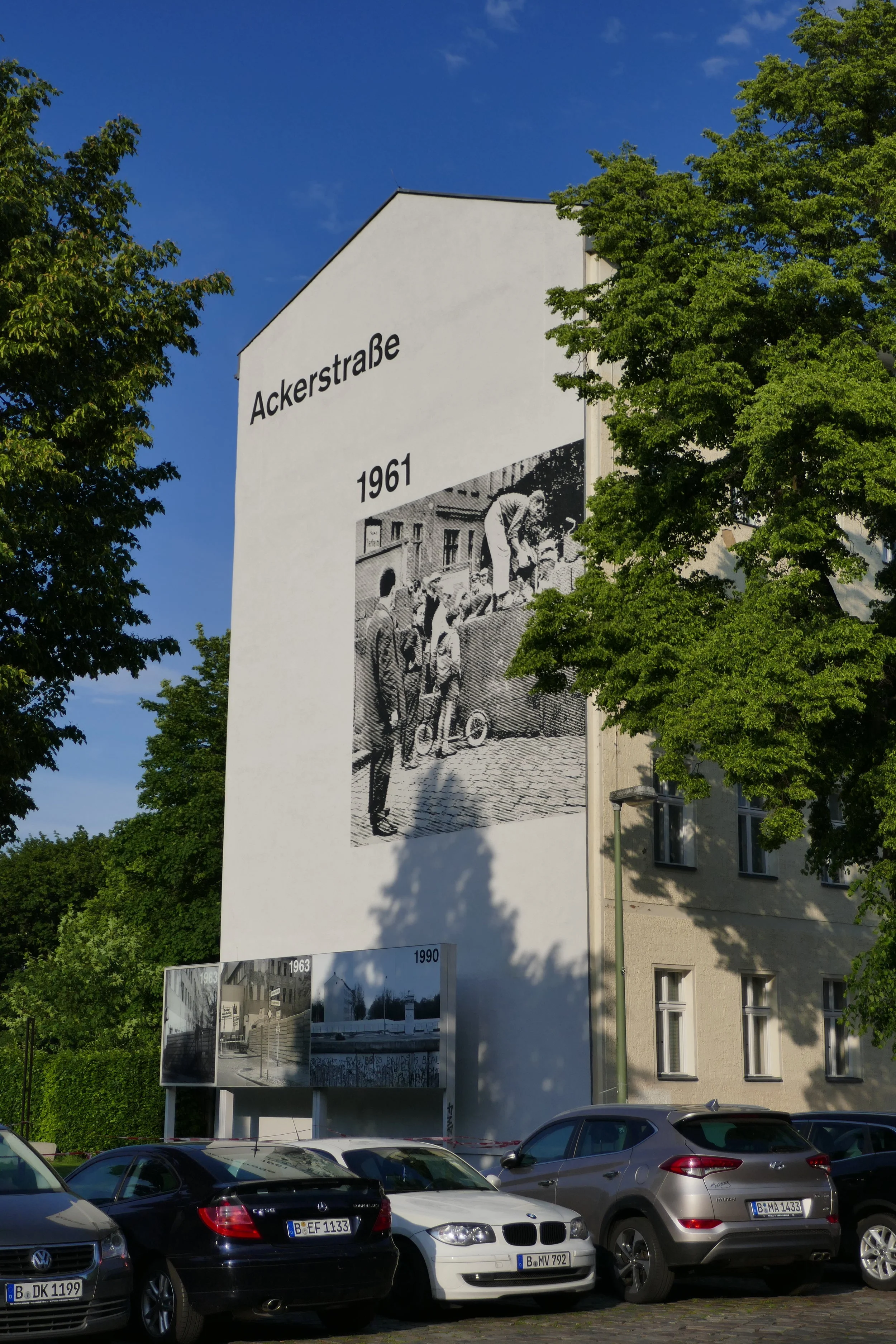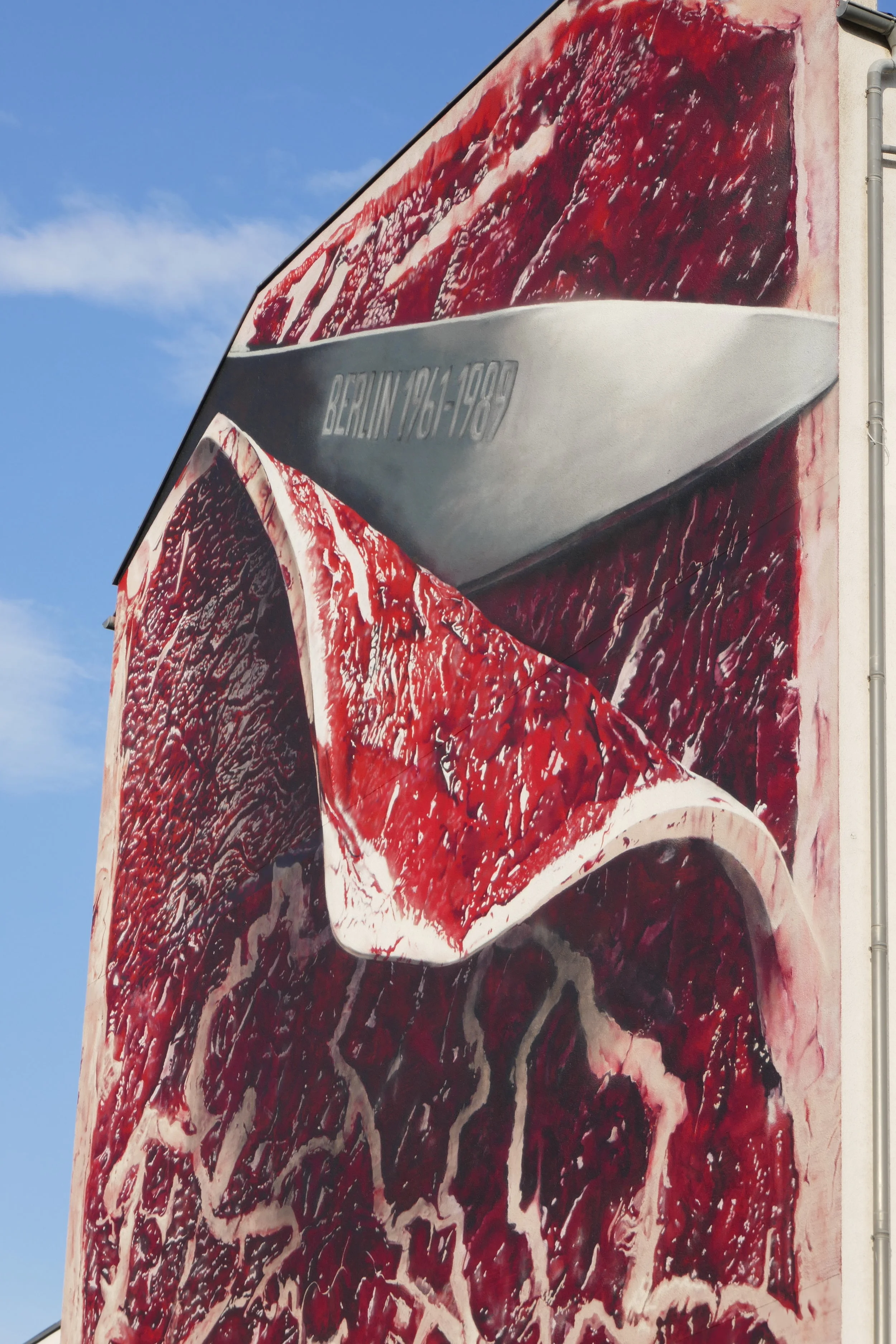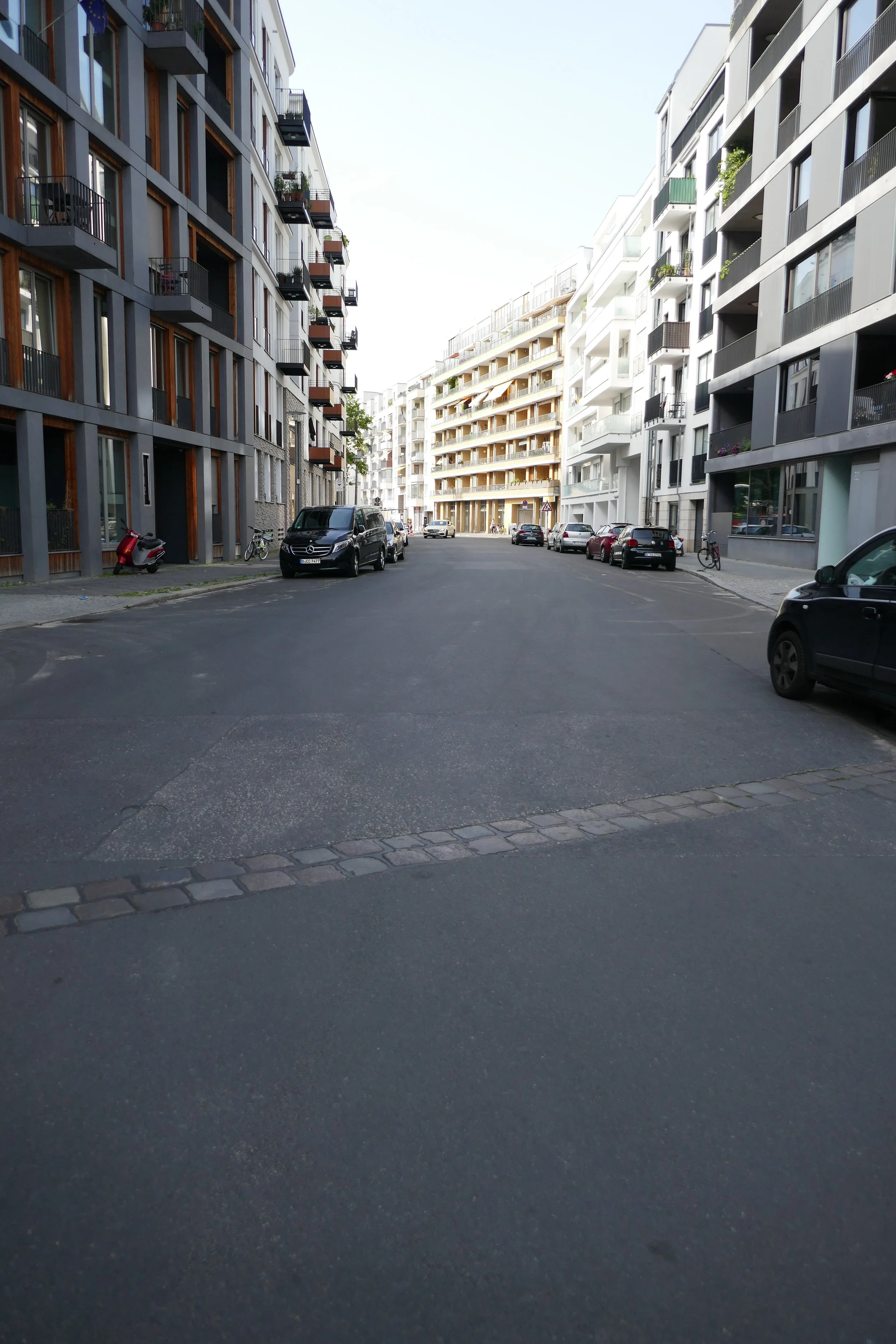our apartment and the berlin wall
November of 2019 will be the 30th anniversary of the fall of the Berlin Wall. Germany embraces Erinnerungskultur (culture of remembrance) with most aspects of its difficult history. The Berlin Wall is no different. There are several memorials to people who died trying to cross. There’s also a Berlin Wall museum. And throughout most of the city, there’s a line of two bricks that mark the exact spot where the Wall stood between East and West Germany. The line of bricks, in particular, is an ever-present reminder of the division that existed here only a few decades ago. To an outsider, current-day Berlin feels like a single, unified city. But crossing back and forth over the memorial line while running errands made me acutely aware of how haphazardly the city was cut in two and how strange it must have been for people living in Berlin at the time. The memorial line and, strangely, our apartment initially sparked my interest in the Wall.
Buildings on our side of the block (left) and apartment buildings built nearly 100 years earlier just across the street (right)
Our street is lined with trees and overlooks a beautiful pond and rose garden. Like the other buildings on the west side of our block, our apartment was built less than five years ago. But across the rose garden on the east side of the street, most of the buildings are from the early 1900s. It seemed strange to have two sides of the same street with such different buildings. So, we did a little digging and found out that the Berlin Wall cut down the middle of our street, separating the houses on the east and west sides. We didn’t realize at first because the memorial line wasn’t included in this part of the city. From then on, I was fascinated by the history of the wall: how it went up, its impacts on the lives of people living in Berlin, how it abruptly came down, and the lingering effect it’s had on Germany.
I’ve read books and explored the area for insights into what life was like between 1961 and 1989. Several nearby buildings have photos from before and after the Wall was built. It’s fascinating to see how close the Wall came to buildings on the West Berlin side. In the west, Berliners could walk up to the wall. In many places, the wall was covered with graffiti and political statements. On the east side of the wall, things were completely different. There was technically one dividing line between East and West Germany, but for the East German government, the GDR, one wall wasn’t enough. To deter East Germans escapes to the west, the GDR built an additional inner wall and added physical barriers between the two.
Blue shows the outer wall, red the inner wall. Our apartment directly between the two walls. (Map from BerlinWallMap)
Talking with our landlords, we found out that not only was the wall close by, but our apartment actually stands in the area that had been between the inner and outer walls on the east side. Only three decades ago, our apartment would have been in the Todesstrifen (Death Strip), the area used to stop would-be, East German escapees by any means necessary. This is the reason that our side of the street is all new buildings; there was nothing here while the Wall stood and for years after it came down.
Since the Wall fell in November 1989 and German reunification began, many efforts have been undertaken to memorialize the Wall and also to bring East and West together again. Our street was rebuilt. The rose garden, pond, and walking paths were re-created to match city plans from the late 1800s. Day-to-day I’m happily unaware of the dark history of this spot, but I’m glad that the history has been preserved and is readily available for anyone wanting to learn about it.
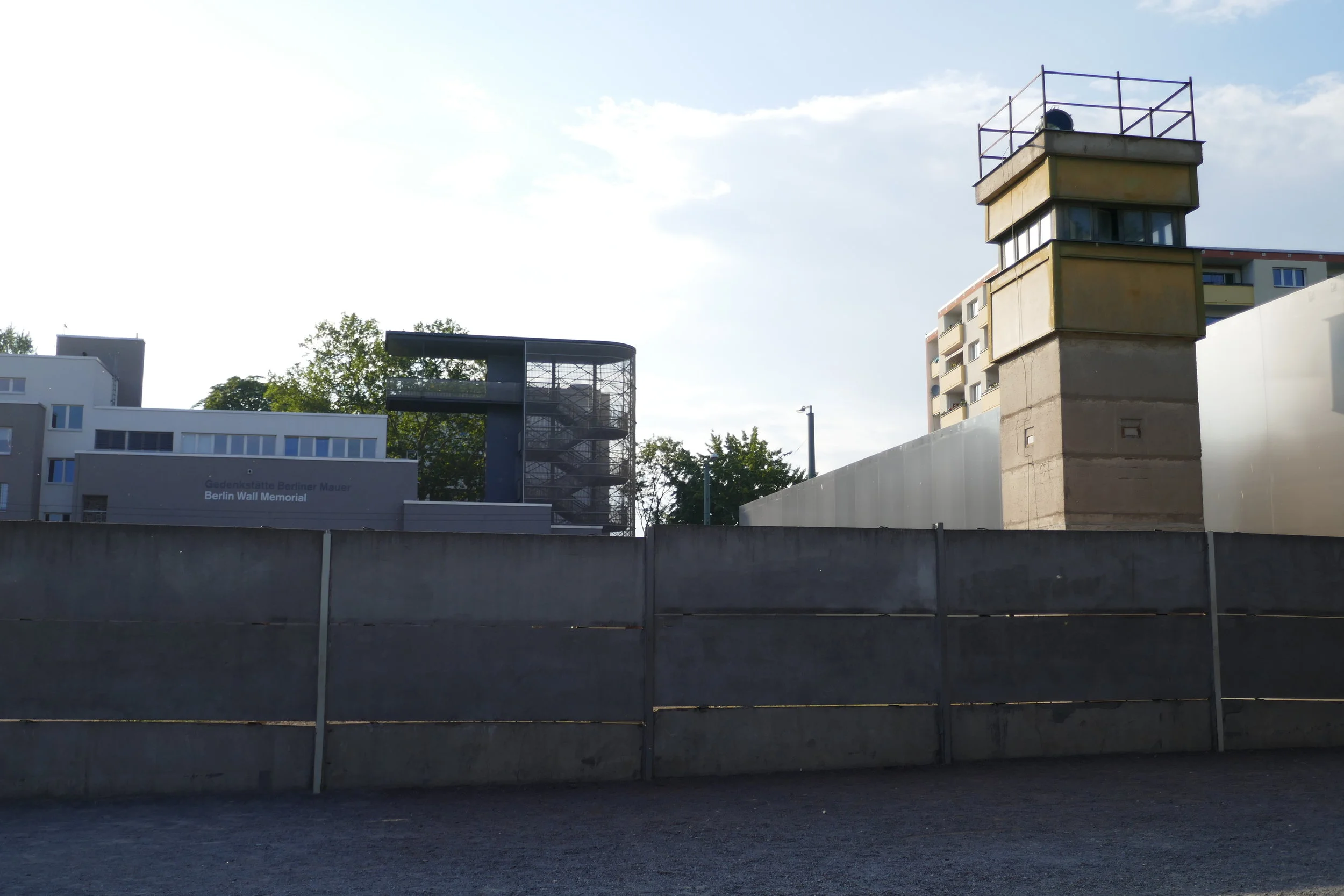
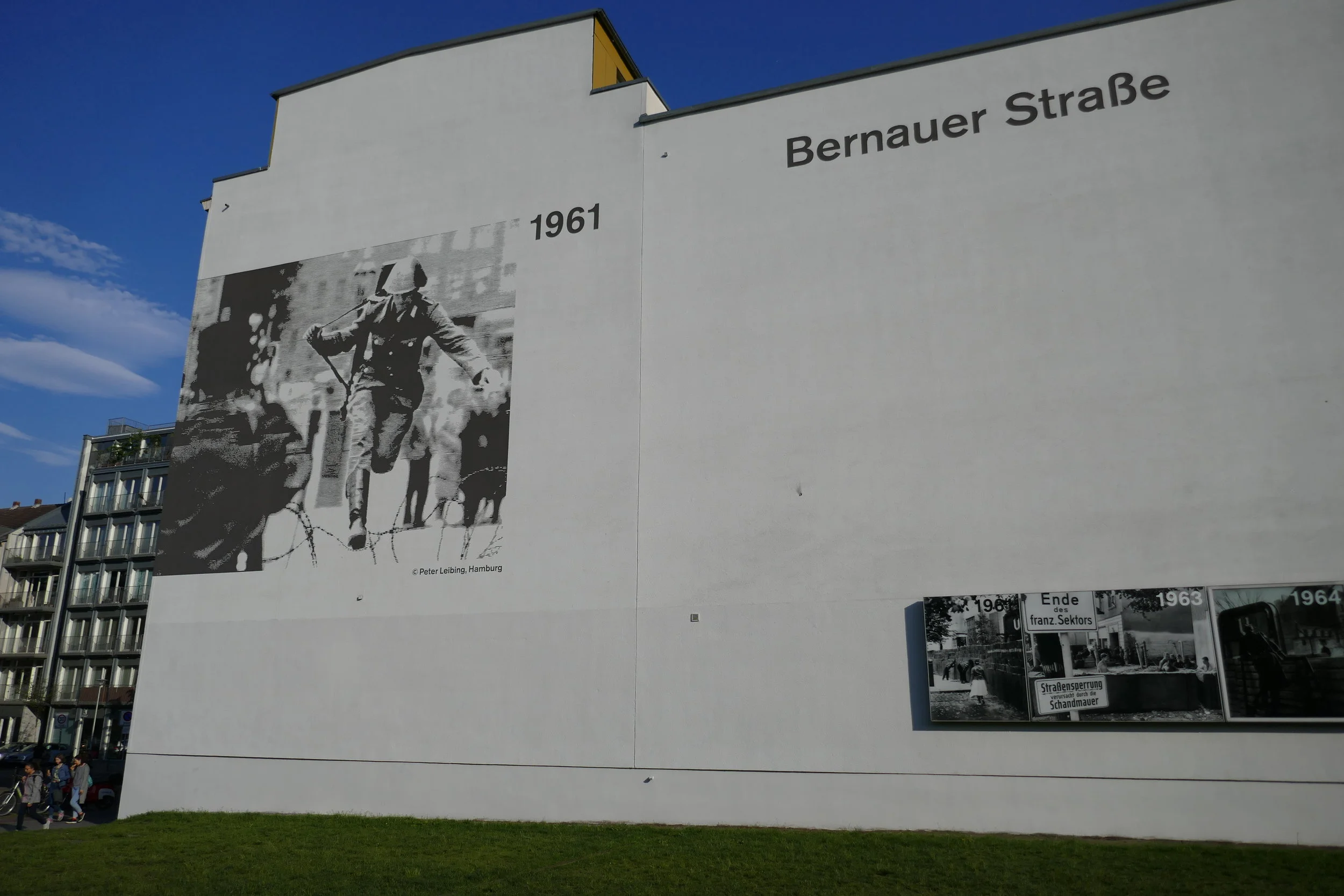



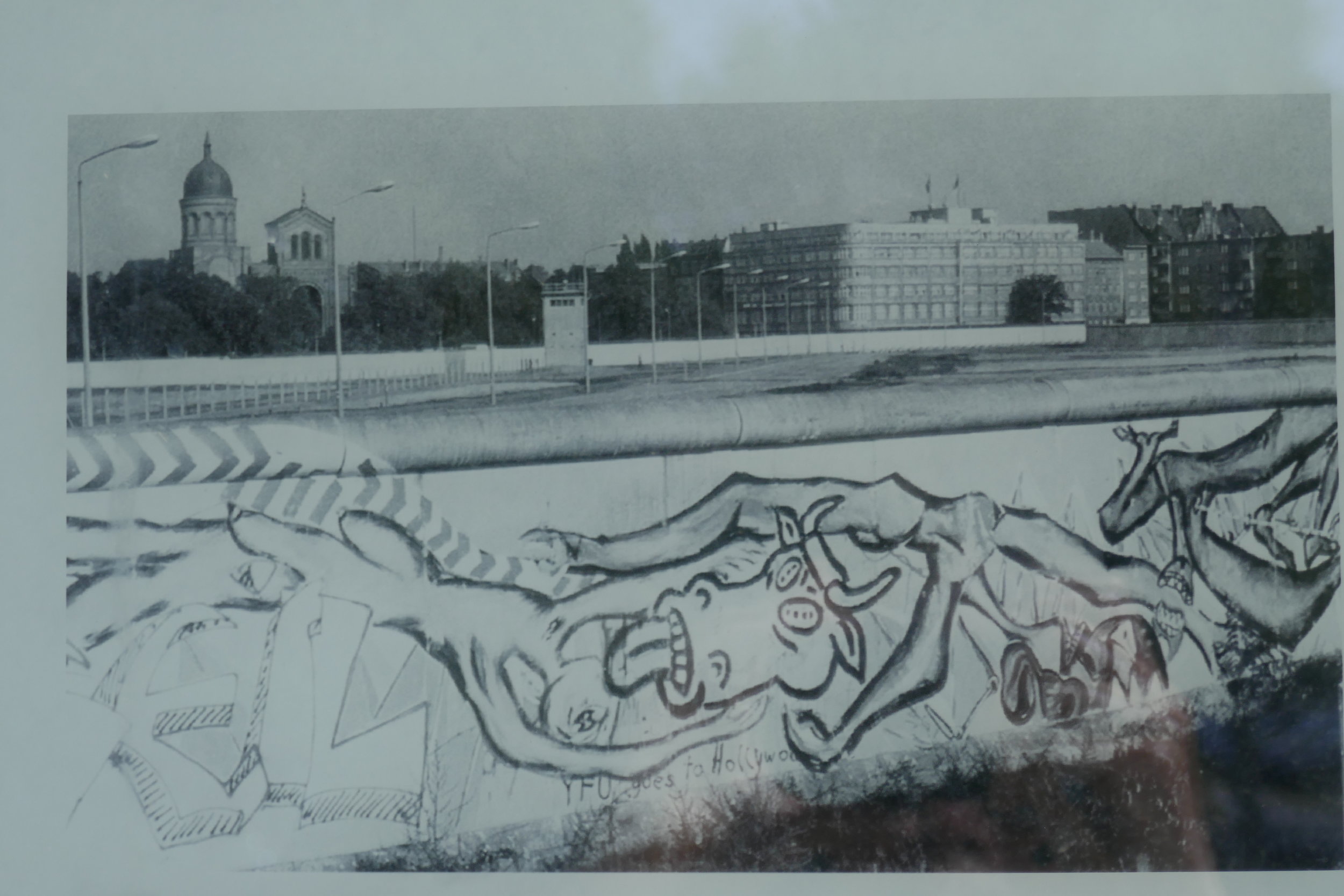
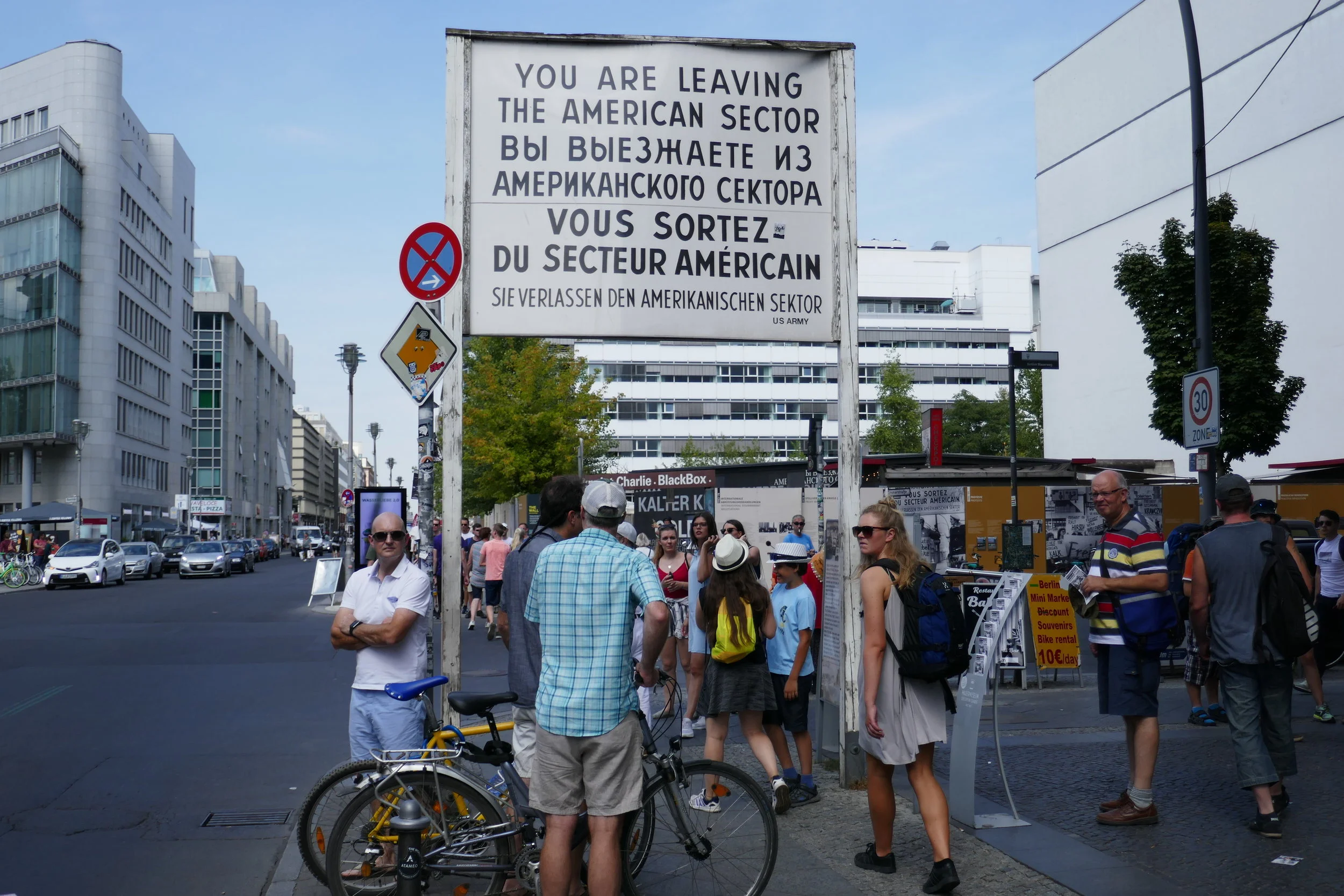
If you’re like me and can’t get enough of German history after WWII (who can??), here are a few of my recommendations:
The Collapse: The Accidental Opening of the Berlin Wall – an exceptional book about the events leading to the fall of the Berlin Wall, which contrary to popular belief came about due to the courage and persistence of individual actors within the DDR and not political pressure from world leaders
Forty Autumns: A Family's Story of Courage and Survival on Both Sides of the Berlin Wall – a touching account of one family’s experience being separated for nearly forty years by the division between East and West Germany
Berlin Wall Map – I only recently came across this interactive website about the Wall, but I think it’s a great resource.
Ballon – a 2018 based-on-true-events movie about a family who tried to escape East Germany by flying over the Berlin Wall in a hot air balloon (not to be confused with the 2017 movie Balloon, which is an “Indian Tamil language horror comedy film” …obviously).
Weissensee – at moments an overly dramatic Romeo and Juliet story set in East Berlin, but worth the time if you can find good English subtitles
Deutschland 83 and Deutschland 86 – I’ve really enjoyed this series (83 is the first season and 86 is the second). It’s one of Germany’s bigger budget efforts. Although it feels a bit over-the-top at times, it shows real historical events that you may not have heard about in history class.
Still on my booklist are: After the Wall, Born in the GDR, and After the Berlin Wall.
When you come to visit, we can go to the Engelbecken, Mauerpark, Checkpoint Charlie, and the East Side Gallery! In the meantime, share your recommendations!



